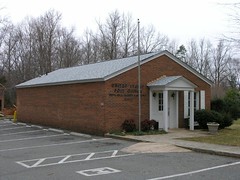They were persecuted constantly and finally found safety at the residence of one Count Nicolas Ludwig von ZinZendorf (a Saxon nobleman).
The chief interest of Zinzendorf's life, however, was the Moravian Brotherhood (Unitas Fratrum). In 1722 he gave the remnants of the Bohemian Brethren, fleeing from their homeland, asylum on his family estate of Berthelsdorf. The village that was built for them was named Herrnhut (i.e., The Lord's Protection). In 1727 the Brethren, some 300 in number, were reorganized, with Zinzendorf as their leader, becoming a new church within the general framework of Lutheranism, but with an intense sense of mission to revive the general church and to evangelize the heathen. Zinzendorf was ordained bishop of the Renewed Brotherhood in 1737 and served until 1741, when he resigned. His intense passion for the unity of all true believers, which was a dominant motive throughout his life, made him one of the first "ecumenical" leaders, although in practice no visible results in this direction were attained and he remained throughout his life basically the great leader of a great evangelistic and missionary group, called in America the Moravian Brethren Church (see Moravians in North Carolina by Jennifer Bower).
TO AMERICA IN 1735
After an unsuccessful attempt to establish a Moravian settlement in Georgia (1735-1740), the Moravians settled in Pennsylvania on the estate of George Whitefield. Moravian settlers purchased 500 acres to establish the settlement of Bethlehem in 1741. Soon they bought the 5,000 acres of the Barony of Nazareth from Whitefield's manager, and the two communities of Bethlehem and Nazareth became closely linked in their agricultural and industrial economy. Other settlement congregations were established in Pennsylvania, New Jersey and Maryland. All were considered frontier centers for the spread of the gospel, particularly in mission to the Native Americans.
Bishop Augustus Spangenberg led a party to survey a 100,000 acre tract of land in North Carolina, which came to be known as Wachau after an Austrian estate of Count Zinzendorf. The name, later anglicized to Wachovia, became the center of growth for the church in that region. Bethabara, Bethania and Salem (now Winston-Salem) were the first Moravian settlements in North Carolina.(see http://www.moravian.org/history).
Bethabara operated under an Oeconomie system. This is a communal system where everyone shares each others housekeeping and labor duties. In 1759, Moravians who wanted to have thier own homes and land founded a second community within the Wachovia tract. Located three miles Northwest of Bethbara, this new settlement was called Bethania and was and operated independently and welcomed all faiths.
One of the men who surveyed the original town lines of Bethania was my great-great-great-great-great-great-great-great-great grandfather, Friedrich Schorr II (b. Oct. 27 1705 d. Nov 28 1773).



No comments:
Post a Comment